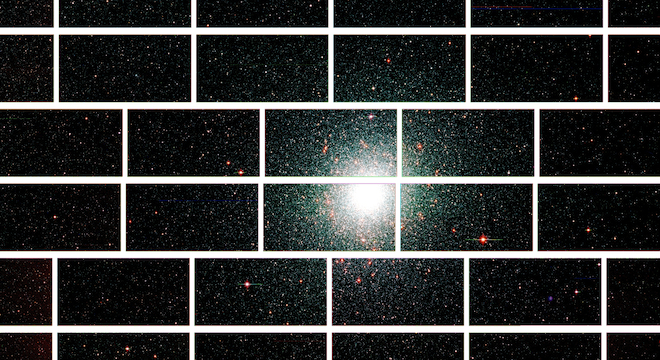You haven’t seen anything like this before. Nobody on Earth has.
Astronomers on Monday released the first batch of images taken by an enormous, skyward looking camera situated in the Chilean Andes, known as the Dark Energy Camera (DECam), which was designed to solve one of the greatest cosmic mysteries: Why the universe is expanding at an accelerating rate.
The first images aren’t expected address that question quite yet (that would be too easy), but the DECam’s larger mission should allow scientists to understand just how much dark energy makes up the universe, theorized to be about 73 to 75 percent. The answer would help explain why the expansion of the universe — everything moving away from everything else — is speeding up in defiance of gravity and Eistein’s Theory of General Relativity, which says it should be slowing down.
The 570-megapixel camera is undertaking a five year study of the cosmos, known as the Dark Energy Survey, which will occur over the next five years, involving 120 scientists from 23 institutions in five countries (the U.S., the U.K., Spain, Brazil, and Germany).
But the first batch of shots, taken on September 12 and released Monday, does reveal in new detail galaxies hundreds of thousands of light years away from Earth.
One series of DECam images provides a view of the Fornax galaxy cluster, found 60 million light years away in the constellation of the same name:

A zoomed-in view highlights the barreled spiral galaxy NGC 1365:

Another image series provides more detailed views of the Small Magellanic Cloud dwarf galaxy located some 200,000 light years from Earth in the constellation Tucana.

Another series of images focuses on the globular star cluster 47 Tucanae, or 47-Tuc, located some 17,000 light years from Earth:

“The achievement of first light through the Dark Energy Camera begins a significant new era in our exploration of the cosmic frontier,” said James Siegrist, associate director of science for high energy physics with the U.S. Department of Energy, in a statement published on the website of national laboratory Fermilab Monday.
The DECam, which BBC helpfully notes is about the size of a phone booth, was constructed at Fermilab, located in Batavia, Illinois, over an eight year period and mounted on the Blanco 4m telescope at the Cerro Tololo Inter-American Observatory (CTIO) in La Serena, Chile.
The camera contains five different lenses and 74 chips called charge-coupled devices, each of which has millions of pixels specifically designed to pick up redshifted light from distant galaxies and convert it to digital data, also providing the DECam and the widest field of view of any ground-based telescope run by the National Optical Astronomy Observatory, 2.2 degrees, or an area 20 times as large as the moon as seen from Earth.
Throughout the survey, the camera will cover a full eighth of the sky as seen from Earth, an area astronomers say contains 300 million galaxies, 100,000 galaxy clusters and 4,000 supernovae. DECam can detect light that is eight billion years old.
Each image captured by the DECam is 1 gigabyte in file size, and the instrument is expected to take 40 images every night during its five-year initial run, sending them to the National Center for Supercomputer Applications (NCSA) in Illinois for processing.






